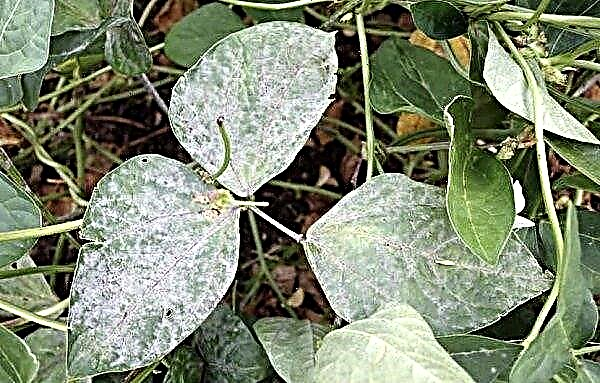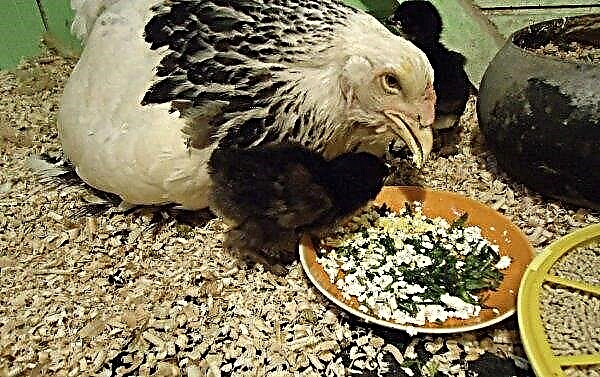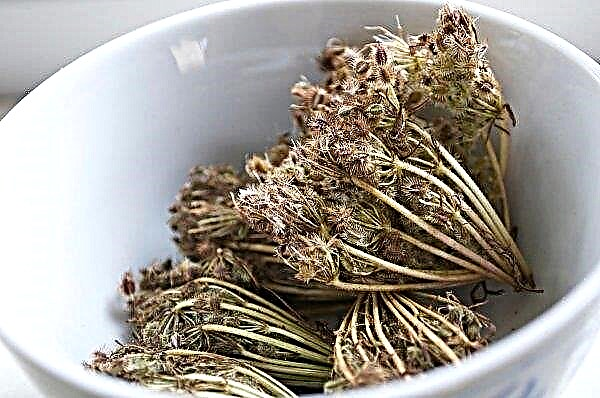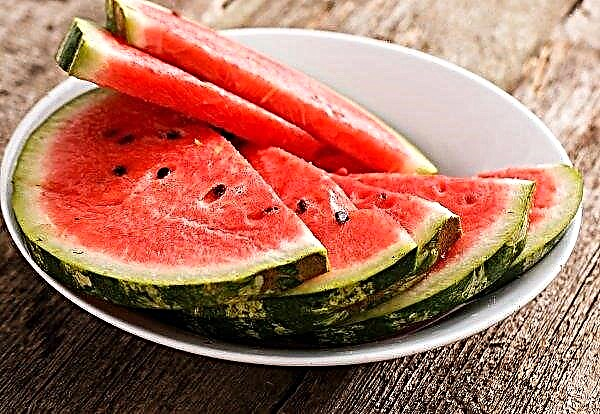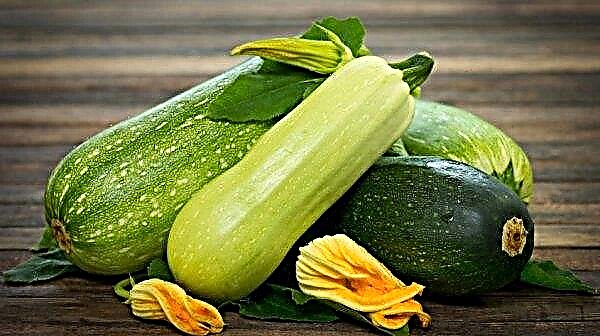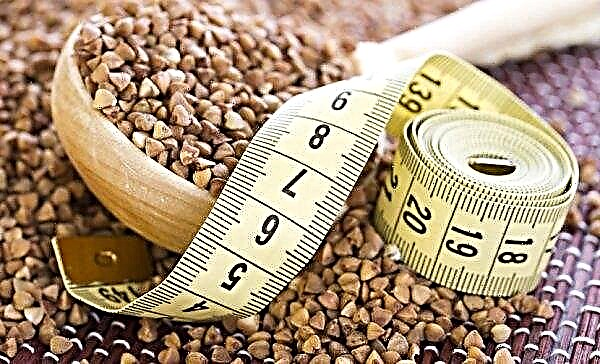Chlorophytum is a decorative-deciduous group plant popular in indoor floriculture. The procedures for caring for it are not complicated, but at the slightest error, the bright color of the foliage dims and turns yellow. Recommendations for care, elimination of problems and the reasons that led to them - in detail in this article.
Proper care of chlorophytum
Chlorophytum is a flowering plant, but flowering occurs only under certain conditions. Proper care and compliance with all procedures will ensure the availability of flowers from March to October. Basic rules for growing:
- lighting and placement - Feels good on the windows of the south, south-west and south-east direction. In the morning she likes to be in the sunshine, at noon she needs to shade, provide diffused light;
- summer temperature - + 20 ... + 23 ° С, in winter - + 12 ... + 18 ° С;
- humidity in the warm season, during the period of active growth, humidity should be increased - 70–75%, in winter - moderate 50%;
- watering - during the active vegetation period, they are watered 2-3 times a week abundantly. During the rest period, from October to January inclusive, make sure that the soil lump does not dry out;
- top dressing - fertilized with balanced mineral liquid complexes for flowering or ornamental foliage plants, the frequency of top dressing - 2 times a month;
- the soil - light and nutritious with neutral acidity, well permeable to air and moisture.

Why do chlorophytum leaves turn yellow and what to do
Florists may experience yellowing of foliage near a flower. The causes of this problem and methods of dealing with them are later in the article.
Did you know? Chlorophytum is useful for people suffering from chronic lung diseases. The plant, absorbing carbon dioxide and other harmful impurities in the air, instead releases phytoncides, which destroy pathogenic bacteria.
Dry air
The humidity indicator in the room is not stable: in summer, when airing, the humidity is much higher than in winter, when heating devices are working. Due to the dryness of the air, the foliage of chlorophytum begins to turn yellow and dry. To avoid this, measures are taken to provide additional moisture:
To avoid this, measures are taken to provide additional moisture:
- spraying and a warm shower;
- placing the flowerpot on a pallet with wet expanded clay, moss;
- placement of wet tissue on a heating battery;
- the location next to decorative fountains;
- the use of household humidifiers.
Nutrient deficiency
In indoor conditions, home plants lack nutrients, so they need to be fed. For chlorophytum, liquid complexes are used, introducing them by the root and extra-root (by leaves) method 2 times a month (except for the rest period). It is advisable to purchase purchased fertilizer products, as they balance the necessary substances for growth and flowering:
- nitrogen;
- potassium;
- phosphorus;
- sodium;
- boron.
 The best compositions for decorative and leafy flowerpots are considered preparations:
The best compositions for decorative and leafy flowerpots are considered preparations:- "Agricola Aqua";
- Bona Forte
- "Etisso."
Important! Excessive minerals in the soil may cause yellowing. Experienced flower growers recommend halving the dosage recommended by the manufacturer.
Inappropriate temperature
Recommended temperature should not exceed + 25 ° С. Overheating, the plant begins to intensively evaporate moisture, which leads to a change in the structure of cell membranes in the leaves. In the summer, the flowerpot feels good on open balconies and terraces, protected from direct sunlight. It is advisable to carry out ventilation in the room in order to cool too hot air naturally.
A sharp drop in temperature due to draft will be detrimental to the flower, the content at indicators on a thermometer below + 10 ° С. Lower temperature reduces the activity of photosynthesis processes, which causes a change in the color of leaf plates.  In addition, a sharp cooling leads to a disease of the root system, which cannot but affect the color of the foliage. During dormancy, the recommended temperature for chlorophytum is + 12 ... + 18 ° C.
In addition, a sharp cooling leads to a disease of the root system, which cannot but affect the color of the foliage. During dormancy, the recommended temperature for chlorophytum is + 12 ... + 18 ° C.
Root system sprawl
Chlorophytum has a well-developed root system, sprawling in a tight pot, the roots begin to lift the stems above the soil surface. The flower becomes crowded, and it changes the color of the leaves to yellow.
If the tips of the leaves began to turn yellow, and the roots make their way through the drainage holes, the flowerpot needs to be transplanted into a more spacious container. Transplantation is carried out in the spring, young specimens - annually, adult bushes - every 2-3 years. The new capacity is chosen wide, since the fleshy roots do not grow in depth, but in breadth.
Mechanical damage
It is possible to damage the green parts of the plant during transplantation, therefore, it is carried out by the method of transshipment, gently holding the flower with your free hand.  If the house has animals, cats, for example, they can chew foliage. In this case, you need to remove the damaged plate, treat the slices with crushed activated carbon. If this is not done, bacteria will begin to develop at the site of damage, which will lead not only to discoloration, but also to diseases.
If the house has animals, cats, for example, they can chew foliage. In this case, you need to remove the damaged plate, treat the slices with crushed activated carbon. If this is not done, bacteria will begin to develop at the site of damage, which will lead not only to discoloration, but also to diseases.
Check out these varieties of chlorophytum:
Wrong watering
The health of chlorophytum is equally badly affected by a lack of moisture and its excess. With a lack of water, the root system stores water, forming thickenings. Nutrients enter the green part in a small volume, which leads to inhibition of photosynthesis. Waterlogging of the soil is fraught with damage to the root system by rot. Sick roots are not able to transport oxygen and moisture, nutrition to the rest of the flower.
Waterlogging of the soil is fraught with damage to the root system by rot. Sick roots are not able to transport oxygen and moisture, nutrition to the rest of the flower.
Yellowing can be caused by excessively hard water, so when watering, you need to stand for about a day. The temperature of water for irrigation should be the same as the temperature of the air in the room.
Important! You can not use cold water for irrigation, otherwise the root system will receive a shock from hypothermia.
Diseases and pests
The errors in care discussed above often lead to diseases of chlorophytum, as well as to insect attack. The main diseases and pests, methods of combating them:
- Root rot - the flowerpot needs to be transplanted, removing the diseased areas of the roots. Treated by spraying with the drug "Alirin B" (2 tablets per liter of water), re-treatment - after a week. If necessary, carry out 3 procedures.
- Bacterial infections (powdery mildew, spotting) - the drug “Gamair” (2 tablets per liter of water) effectively copes with the disease. 3 treatments are carried out, spraying the plant with an interval between procedures of 7 days.
- Thrips, aphids - sucking insects, abundantly breeding on indoor flowers. Chlorophytum can be cleaned by mechanically removing insects with a soap solution and a warm shower. After this, the flower must be sprayed with the “Aktara” preparation, the solution is diluted in a proportion of 1 g / 1.25 L of water.
- Mealybug, Scale - also eat plant juice. You can get rid of them with the help of the Apache drug by spraying flowers at a dosage of 0.5 g / 1 liter of water or by irrigating the soil in a proportion of 1 g / 1 liter of water.
- Spider mites - it is possible to fight the tick with the help of acaricidal preparations, for example, “Acarin”. The solution is diluted in a proportion of 2 ml / 1 l of water.

Causes of Other Leaf Issues
In the process of growing chlorophytum, other equally dangerous problems may appear. List of possible difficulties and their causes:
- black spots on the green - excessive watering;
- slow growth - unsuitable soil (heavy, sour), cramped pot;
- do not develop "kids" - tight capacity;
- foliage breaks - lack of light;
- brown spots - waterlogging at low temperature;
- leaves dry and curl - lack of nutrition and watering.
Did you know? Bioenergetics call chlorophytum an energy protector. The flower absorbs the negative impact, creating a benevolent and harmonious atmosphere in the house, eliminates conflicts.
Preventative measures
Diseases and problems with the growth and development of chlorophytum can be prevented. Basic preventive measures:
- Plant the plant in a suitable soil: with neutral acidity and good throughput.
- Before planting, the soil must be decontaminated (calcined or steamed in a water bath).
- Protect the plant from hypothermia and overheating, from drafts.
- If the air is too dry, apply moisture (spraying) measures.
- Observe the watering regime, the soil should not be dry or too moist.
- The plant needs bright diffused light. During the period of sun activity, the flowerpot needs to be shaded.
- Perform the transplant on time, adhering to the technology of the procedure (transshipment method).
- During the period of vegetative activity, observe the regimen and dosage of top dressing.
- Regularly inspect plants for pests.

Chlorophytum is loved by many experienced gardeners, and beginners will also cope with the care. The decorative flower is unpretentious and hardy, but its development depends on compliance with the rules for cultivation and care.


